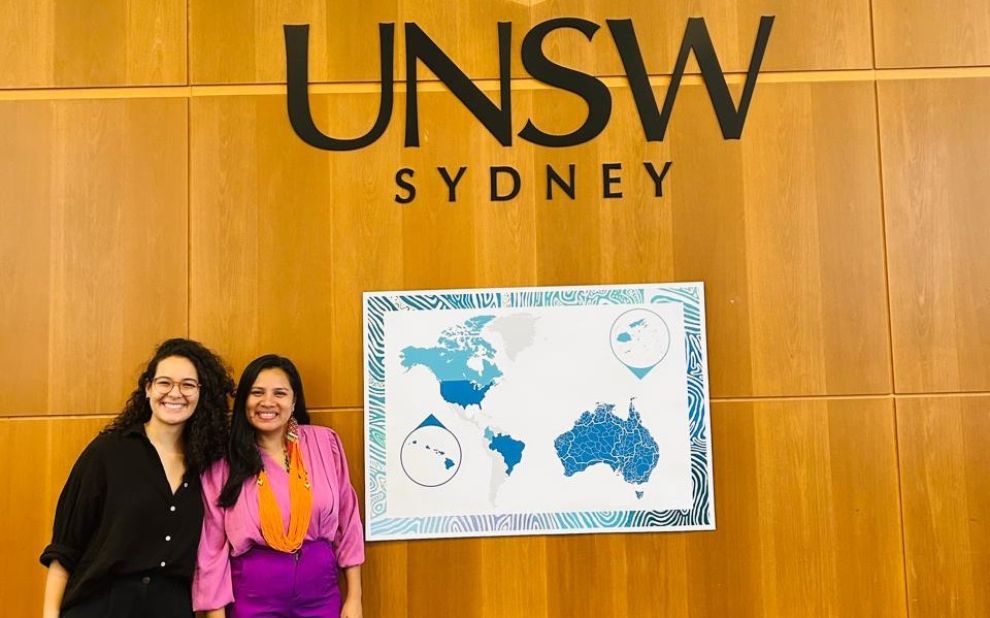Indigenous heritage project highlighted at global conference in Australia
The program seeks to increase opportunities for mobility, research, education and future partnerships, as well as contributing to global indigenous social impact.

An exchange of knowledge between indigenous researchers from all over the world. This was the focus of the conference Global Indigenous Reciprocal Knowledge Exchange: Developing a Community of Practice for Impact, organized by the University of New South Wales (UNSW) in Sydney, Australia. The event, which took place between February 9 and 13, saw the participation of the School of Social Sciences at Fundação Getulio Vargas (FGV CPDOC), through researchers Laura Guimarães and Amnhàk Maria Aparecida Apinajé, who presented the experience of the project Indigenous Documentary Heritage: Collaborative Work between the FGV CPDOC and the Apinajé People.
During the meeting, indigenous academics of different nationalities met with local indigenous people and non-indigenous UNSW staff for a series of shared cultural experiences and workshops. The event sought to promote the reciprocal exchange of knowledge, and collaboration in research and education between global indigenous communities, in order to contribute to generating lasting social impact for indigenous communities. The occasion also served as the basis for the creation of an International Community of Practice, with a focus on increasing opportunities for mobility, research, education and future partnerships, while contributing to global indigenous social impact.
On the occasion, Amnhàk Maria Aparecida Apinajé gave a presentation on the Apinajé Indigenous People, integrating her experience as an indigenous leader and her academic experience with the collaborative work that is being developed with FGV CPDOC. This project aims to build up a historical and cultural heritage, as well as reinforcing the social and personal importance of the Apinajé.
During the Global Exchange, the researchers took part in a weaving workshop using ancestral practices, got to know the stories and traditions of the local communities through the Tribal Warrior boat trip, and debated global indigenous issues that cross country borders, such as indigenous education and integration with non-indigenous knowledge.
During the event, they also discussed the challenges and opportunities for the inclusion of indigenous people in universities, comparing the specificities of Latin America with the rest of the world, and the impact of welcoming programs for indigenous students in universities.
For Laura Guimarães, the exchange of knowledge with indigenous researchers from different parts of the world makes it possible to learn about the different contexts of indigenous communities and their respective cultures: "Getting to know and reflect on indigenous knowledge together, from different perspectives, is very enriching. It's inspiring to see how it's possible to promote collaborative practices that integrate indigenous and non-indigenous knowledge, while respecting the particularities of the groups and traditions," she said.
Amnhàk Maria Aparecida Apinajé, who is also a student on the FGV CPDOC Master's Degree in Cultural Assets and Social Projects, highlighted the importance of talking about the history of the Apinajé people to other indigenous communities:
"This opportunity enables us to gain a voice, power and a leading role. That's why this meeting is so significant, as it represents the recognition and appreciation of the culture of indigenous peoples. In addition, it is a chance to give our people back this recognition, serving as an inspiration so that other indigenous people can also have the same opportunities that we are receiving," said Amnhàk.
To find out more about the program responsible for indigenous issues at UNSW, as well as the actions and policies that the university has developed in this sphere, visit the website.
Leia também
